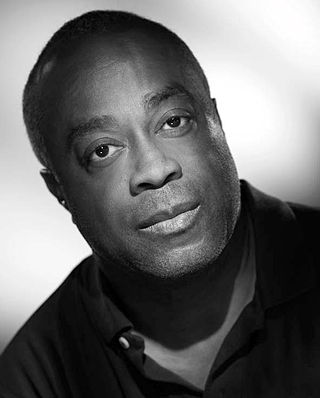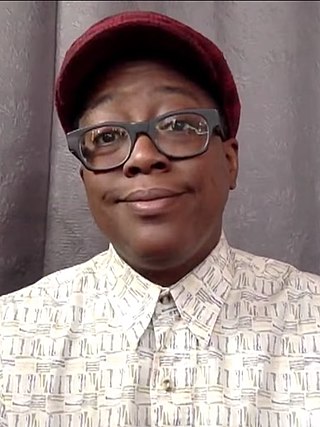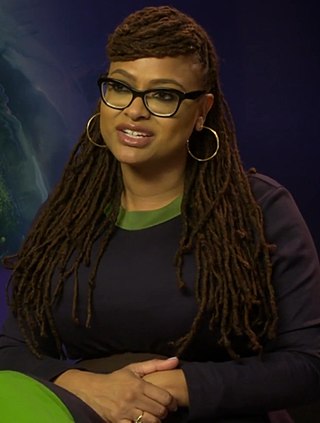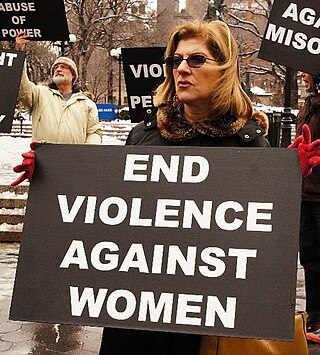Related Research Articles

Julie Ethel Dash is an American filmmaker, music video and commercial director, author, and website producer. Dash received her MFA in 1985 at the UCLA Film School and is one of the graduates and filmmakers known as the L.A. Rebellion. The L.A. Rebellion refers to the first African and African-American students who studied film at UCLA. Through their collective efforts, they sought to put an end to the prejudices of Hollywood by creating experimental and unconventional films. The main goal of these films was to create original Black stories and bring them to the main screens. After Dash had written and directed several shorts, her 1991 feature Daughters of the Dust became the first full-length film directed by an African-American woman to obtain general theatrical release in the United States. In 2004, Daughters of the Dust was named to the National Film Registry by the Library of Congress for its "cultural, historical and aesthetic significance". Stemming from the film's success, Dash also released novels of the same title in 1992 and 1999. The film was later a key inspiration for Beyoncé's 2016 album Lemonade.

Charles Burnett is an American film director, film producer, writer, editor, actor, photographer, and cinematographer. His most popular films include Killer of Sheep (1978), My Brother's Wedding (1983), To Sleep with Anger (1990), The Glass Shield (1994), and Namibia: The Struggle for Liberation (2007). He has been involved in other types of motion pictures including shorts, documentaries, and a TV series.

Richard Leacock was a British-born documentary film director and one of the pioneers of direct cinema and cinéma vérité.
Kasi Lemmons is an American film director, screenwriter, and actress. She made her directorial debut with Eve's Bayou (1997), followed by Talk to Me (2007), Black Nativity (2013), Harriet (2019), and Whitney Houston: I Wanna Dance with Somebody (2022). She also directed the Netflix limited series Self Made (2020), and an episode of ABC's Women of the Movement (2022).

Euzhan Palcy is a French film director, screenwriter, and producer. Her films are known to explore themes of race, gender, and politics, with an emphasis on the perpetuated effects of colonialism. Palcy's first feature film Sugar Cane Alley received numerous awards, including the César Award for Best First Feature Film. With A Dry White Season (1989), she became the first black female director to have a film produced by a major Hollywood studio, MGM.
Marcia Lou Lucas is an American film editor. She is best known for her work editing the Star Wars trilogy (1977–1983) as well as other films by her then-husband George Lucas: THX 1138 (1971) and American Graffiti (1973). She also edited Martin Scorsese's Alice Doesn't Live Here Anymore (1974), Taxi Driver (1976), and New York, New York (1977).

Cheryl Dunye is a Liberian-American film director, producer, screenwriter, editor and actress. Dunye's work often concerns themes of race, sexuality, and gender, particularly issues relating to black lesbians. She is known as the first out black lesbian to ever direct a feature film with her 1996 film The Watermelon Woman. She runs the production company Jingletown Films based in Oakland, California.
Sesame Street international co-productions are adaptations of the American educational children's television series Sesame Street but tailored to the countries in which they are produced. Shortly after the debut of Sesame Street in the United States in 1969, television producers, teachers, and officials of several countries approached the show's producers and the executives of the Children's Television Workshop (CTW), renamed Sesame Workshop (SW) in 2000, about the possibility of airing international versions of Sesame Street. Creator Joan Ganz Cooney hired former CBS executive Michael Dann to field offers to produce versions of the show in other countries.

Ava Marie DuVernay is an American filmmaker, screenwriter, and producer. She is a recipient of two Primetime Emmy Awards, two NAACP Image Award, a BAFTA Film Award, and a BAFTA TV Award, as well as a nominee for an Academy Award and Golden Globe. In 2011, she founded her independent distribution company ARRAY.

Tami Kashia Gold is a documentary filmmaker, visual artist and educator. She is also a professor at Hunter College of the City University of New York in the Department of Film and Media Studies.

Zeinabu irene Davis is an American filmmaker and professor in the Department of Communication at the University of California, San Diego. In 1985, she received her M.A in African studies at UCLA and went on to earn her M.F.A in Film and Television production in 1989. Davis is known as one of the graduates and filmmakers of the L.A. Rebellion. The L.A. Rebellion refers to the first African-American students who studied film at UCLA. Through their collective efforts, they sought to put an end to the prejudices of Hollywood by creating experimental and unconventional films. The main goal of these films was to create original Black stories and bring them to the main screens. Her works in film include short narratives, documentaries and experimental films that focus heavily on the African American female perspective.
Black women filmmakers have made contributions throughout the history of film. According to Nsenga Burton, writer for The Root, "the film industry remains overwhelmingly white and male. In 2020, 74.6 percent of movie directors of theatrical films were white, showing a small decrease from the previous year. In terms of representation, 25.4 percent of film directors were of ethnic minority in 2020. Of the 25.4 percent of minority filmmakers, a small percentage was female.

Diandrea Rees is an American screenwriter and director. She is known for her feature films Pariah (2011), Bessie (2015), Mudbound (2017), and The Last Thing He Wanted (2020). Rees has also written and directed episodes for television series including Empire, When We Rise, and Philip K. Dick's Electric Dreams.
Leslie Harris is an American film director, screenwriter and producer.
Pearl Bowser was an American author, collector, television director, film scholar, film director, producer, filmmaker, independent distributor and film archivist. Along with her peers Mel Roman and Charles Hobson, Bowser researched and curated "The Black Film" retrospective at the Jewish Museum in 1970. This prompted a new wave of public interest into "exhibiting, producing, and engaging with African American cinema beyond borders". Most of her exalted career was spent traveling the globe in order to cultivate audiences for marginalized filmmakers. An example of her efforts, and also her most groundbreaking work, manifested in her research on "early-1900s Black film pioneer Oscar Micheaux". This research can be seen in her book on the first ten years of the career of Oscar Micheaux, an African-American who directed 40 "race pictures" between 1918 and 1940. She is thus credited for having helped rediscover some of Oscar Micheaux's rare surviving films. She is the founder of African Diaspora Images, a collection of visual and oral histories that documents the history of African-American filmmaking. Part of her journey included teaching young people film in the 1960s and 1970s.

Judy Kibinge is a Kenyan filmmaker, writer and producer. She has produced, written and directed a number of films, best known are Something Necessary (2013), Dangerous Affair (2002), and Project Daddy (2004). She is also known for establishing Docubox, a documentary film fund for African filmmakers to help them produce and distribute their film. She released her first film, The Aftermath, in 2002 and critics have said that she uses her films to impart stories about Kenya, particularly those about women and others that are typically not told in mainstream Hollywood.
African American cinema evolved at just about the same pace as white cinema, and although the role of Black women in early silent film has only recently begun to receive popular and academic attention, Black women were involved in Black cinema from the very start of U.S. film history. In their own day, Maria P. Williams was called the first Black woman filmmaker for her work on The Flames of Wrath (1923) and Tressie Souders was also honored with the same distinction for her work in A Woman’s Error (1922). Others have argued that that distinction belongs to Madame E. Toussaint Welcome's war documentary Doing Their Bit (1916) or Eloyce King Patrick Gist for Hell Bound Train. What's certain is that Black women were contributing as screenwriters, actors, directors and producers from the earliest days of film.

Cassie Jaye is an American film director, best known for directing the 2016 documentary film The Red Pill about the men's rights movement.
I Am Somebody is a 1970 short political documentary by Madeline Anderson about black hospital workers on strike in Charleston, South Carolina. This was the first half-hour documentary film by an African-American woman in the film industry union. This film is one of the first to link black women and the fight for civil rights.

African American cinema is loosely classified as films made by, for, or about Black Americans. Historically, African American films have been made with African-American casts and marketed to African-American audiences. The production team and director were sometimes also African American. More recently, Black films featuring multicultural casts aimed at multicultural audiences have also included American Blackness as an essential aspect of the storyline.
References
- 1 2 3 4 5 6 7 8 9 10 11 12 13 14 15 16 17 18 19 20 Stuhldreher, Tim (August 12, 2016). "Trailblazing filmmaker Madeline Anderson, a Lancaster native, reflects on a long career advocating for change". LNP . Archived from the original on July 27, 2018. Retrieved July 29, 2018.
- ↑ Dixon (1997) , pp. 8–9
- 1 2 3 4 5 6 Dixon (1997) , p. 9
- 1 2 3 4 5 6 Moon (1992)
- 1 2 3 Materre (2004) , pp. 3–4
- 1 2 Materre (2004) , p. 4
- ↑ Moon (1997) , p. 15
- 1 2 Dixon (1997) , p. 8
- 1 2 Moon (1997) , p. 9
- ↑ Martin (2013) , pp. 74–75
- ↑ Martin (2013) , p. 76
- ↑ Materre (2004) , p. 5
- 1 2 3 4 Moon (1997) , p. 10
- 1 2 3 Materre (2004) , p. 3
- ↑ Materre (2004) , p. 9
- ↑ Martin (2013) , p. 78
- 1 2 3 Materre (2004) , p. 2
- ↑ Martin (2013), pp. 79–80
- ↑ Martin (2013) , pp. 86–87
- 1 2 Martin (2013) , p. 73
- ↑ Martin (2013) , p. 74
- ↑ Martin (2013) , pp. 77–78
- ↑ Martin (2013) , p. 91
- ↑ Materre (2004) , pp. 9–10
- ↑ Martin (2013) , pp. 90–91
- 1 2 Moon (1997) , p. 12
- ↑ Martin (2013) , p. 86
- ↑ Films and Other Materials for Projection, Library of Congress Catalogs 1975, Library of Congress, Washington, DC, 1976. p.227.
- ↑ Films and Other Materials for Projection, Library of Congress Catalogs 1975, Library of Congress, Washington, DC, 1976, p.72.
- ↑ Chow, Andrew R. (December 11, 2019). "See the 25 New Additions to the National Film Registry, From Purple Rain to Clerks". Time. New York, NY. Retrieved December 11, 2019.
Bibliography
- Dixon, Wheeler Winston (1997). "Adachi to Higgins". In Dixon, Wheeler Winston (ed.). The Exploding Eye : A Re-Visionary History of 1960s American Experimental Cinema . Albany, NY: State Univ. of New York Press. pp. 7–47. ISBN 0791435660.
- Martin, Michael T. (October 2013). "Madeline Anderson in Conversation: Pioneering an African American Documentary Tradition". Black Camera. 5 (1). Indiana University Press: 72–93. doi:10.2979/blackcamera.5.1.72. S2CID 143588614.
- Materre, Michelle (2004). Interview of Madeline Anderson by Michelle Materre. Hatch Billops Collection. pp. 1–10.
- Moon, Spencer (1992). "Behind the scenes: A pioneer in public TV". Black Film Review. 6 (4). One Media. ISSN 0887-5723.
- Moon, Spencer (1997). "Madeline Anderson" . Reel Black Talk: A Sourcebook of 50 American Filmmakers. Westport, CT [u.a.]: Greenwood Press. pp. 7–15. ISBN 0313298300.